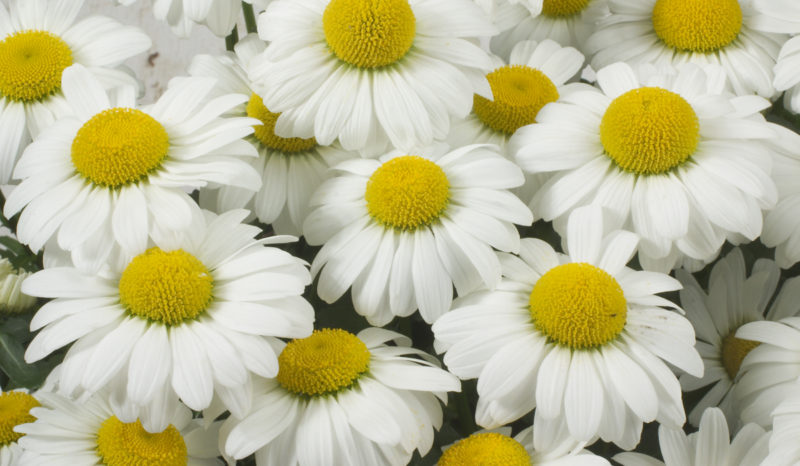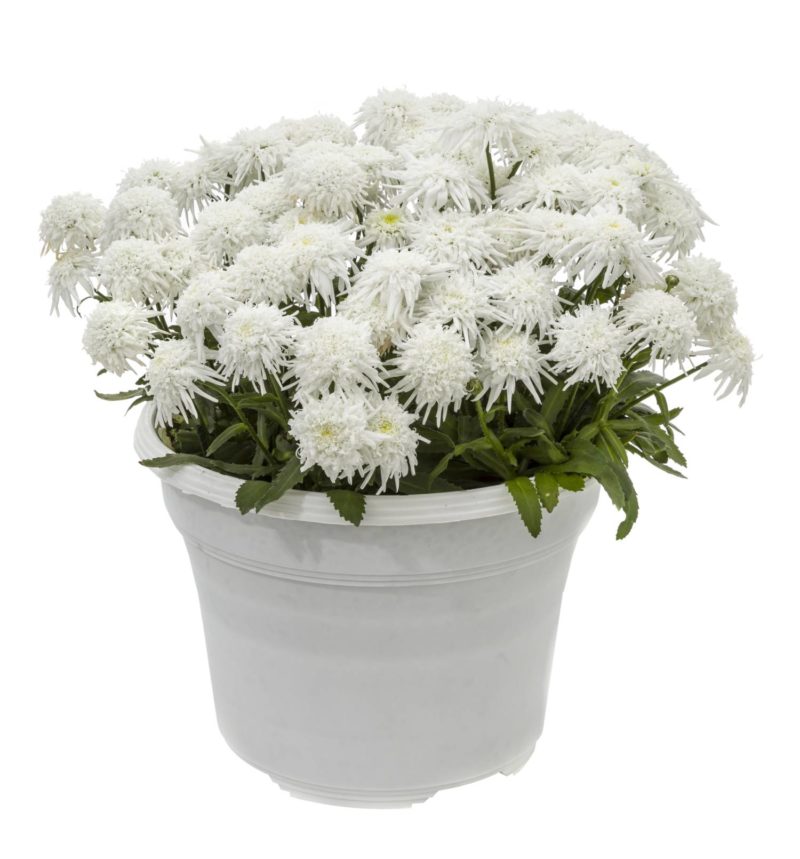
Culture Report: Daylength Neutral Leucanthemum
Leucanthemum has enjoyed decades-long popularity as a well recognizable perennial that thrives throughout most of North America. It is commonly referred to as “Shasta Daisy” due to original commercial selections being hybridized near Mount Shasta in Northern California in the late 1890s by Luther Burbank. Until this work by Burbank, all were classified as chrysanthemum. Burbank first developed leucanthemum ‘Alaska’, still widely used to this day.
BREEDING BREAKTHROUGH

Little in the genetical pipeline changed on Shasta Daisy until the introduction of vegetatively produced cuttings brought focus on this popular genus. Historically, all available selections were obligate long day plants with a 14-hour light requirement to initiate blossoms. Green Fuse Botanicals was the first breeding company to introduce a completely daylength neutral selection in 2003 with ‘Angel Daisy’. This breeding breakthrough allowed a predictable finishing schedule. Moving forward, all Green Fuse Botanicals leucanthemum require only temperature to induce flowering and not daylength. This advancement also removed the need for vernalization, or cold treatment. All seed varieties had required 15 weeks below 40° F to bloom uniformly. This requirement, in combination with germination and rooting time, gave the grower a total minimum crop time of six to seven months. Today’s genetics by Green Fuse deliver a finished container in as little as 13 weeks.
VARIETY SELECTION
‘Darling Daisy’: The most compact selection. Best situated for quart production. Hardy to Zone 6.
‘Double Darling Daisy’: Very compact, with a fully double blossom. Suitable for quart production. Hardy to Zone 5.
‘Carpet Angel’: The world’s first groundcover leucanthemum. Quart through gallon production. Carpet is an excellent perennial for borders. Zone 4 hardy.
‘Angel Daisy’: The first daylength neutral Shasta. Standard for quart through gallon production. Hardy to Zone 4.
‘Double Angel Daisy’: All new commercially in 2022. Same performance as other Angel varieties, but with a fully double flower. Zone 4 hardy.
‘White Mountain’: A top seller and the true “workhorse” of all leucanthemum. Will will fit any size container with its predictable habit and bloom. Zone 4 hardy.
‘Darling Daisy Supreme’: The world’s first Shasta that will throw multiple blooms per single stem. This allows less time between cycles as more flowers are always ready to open. Works well in quarts on up. Hardy to Zone 5.
‘Betsy’: The world’s largest flowering leucanthemum. ‘Betsy’ has massive blooms, but a well-controlled habit that will fit any size container. Zone 4 hardy.
PROPAGATION
Propagation is best performed in a 72- or 105-cell tray. Rooting hormone is highly recommended either by a dip or a foliar application. Foliar K-IBA applications at 500 ppm will reduce rooting time by four to five days. EC needs to be maintained between 5.7 and 6.5. Applications of fungicide should also be applied during the first few days as the leaf mass is susceptible to Botrytis. Feed is beneficial at 65- to 100-ppm nitrogen (20-6-22).

All Green Fuse leucanthemum have been screened and certified clear of agrobacterium, specifically Rhodococcus; because of this, it is best to keep them separate from other leucanthemum to avoid cross contamination. The rooting period will be five weeks in total. Two weeks in a propagation zone and three weeks to finalize the hardening phase.
FINISHING
Finishing is accomplished via temperature. Ideal temperature is 68 to 72° F days and 60 to 65° F nights. All Green Fuse leucanthemum have neutral daylength requirements, so supplemental lighting is not required to achieve flower. Since they also do not require a vernalization period, quick crop times may be achieved that are very similar to annual crop requirements.
Pinching is not required and PGRs are rarely needed. If excessive temperatures occur, 2,000-ppm daminozide + 3-ppm uniconazole or Concise/Sumagic at a spray rate of 10 to 20 ppm with two to three applications is quite effective at holding growth. To achieve an increase of basal branching, Configure at 500 to 600 ppm spray increases laterals by 30 to 40%. Leucanthemum are best controlled with cooler temperatures to promote strong basal branching.
Feed rates of 150- to 175-ppm nitrogen are ideal to avoid chlorotic growth. Shastas are susceptible to high salts, so avoid heavy feeds without a clear flush every third watering. Leucanthemum are generally forgiving of pesticide applications, but it is extremely important to avoid Abamectin at any point. Please be aware of drift as it will cause irreversible damage.
As the perennial market continues to expand with numerous new gardeners coming into retailers, we are proud to deliver genetics that deliver season long and provide consumer success. The continued drive to deliver leucanthemum that are grower oriented with consumer success in mind will bring many new, exciting introductions into this large class in the years to come.









 Video Library
Video Library 


















